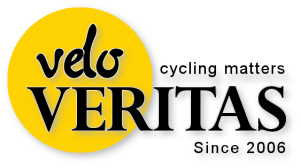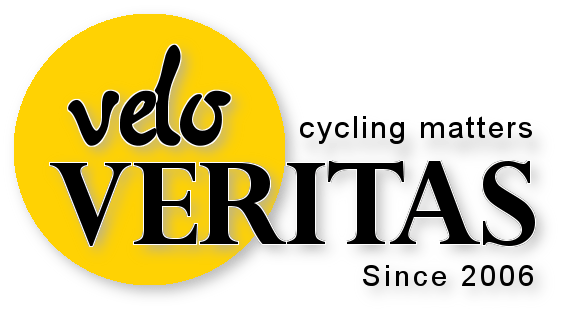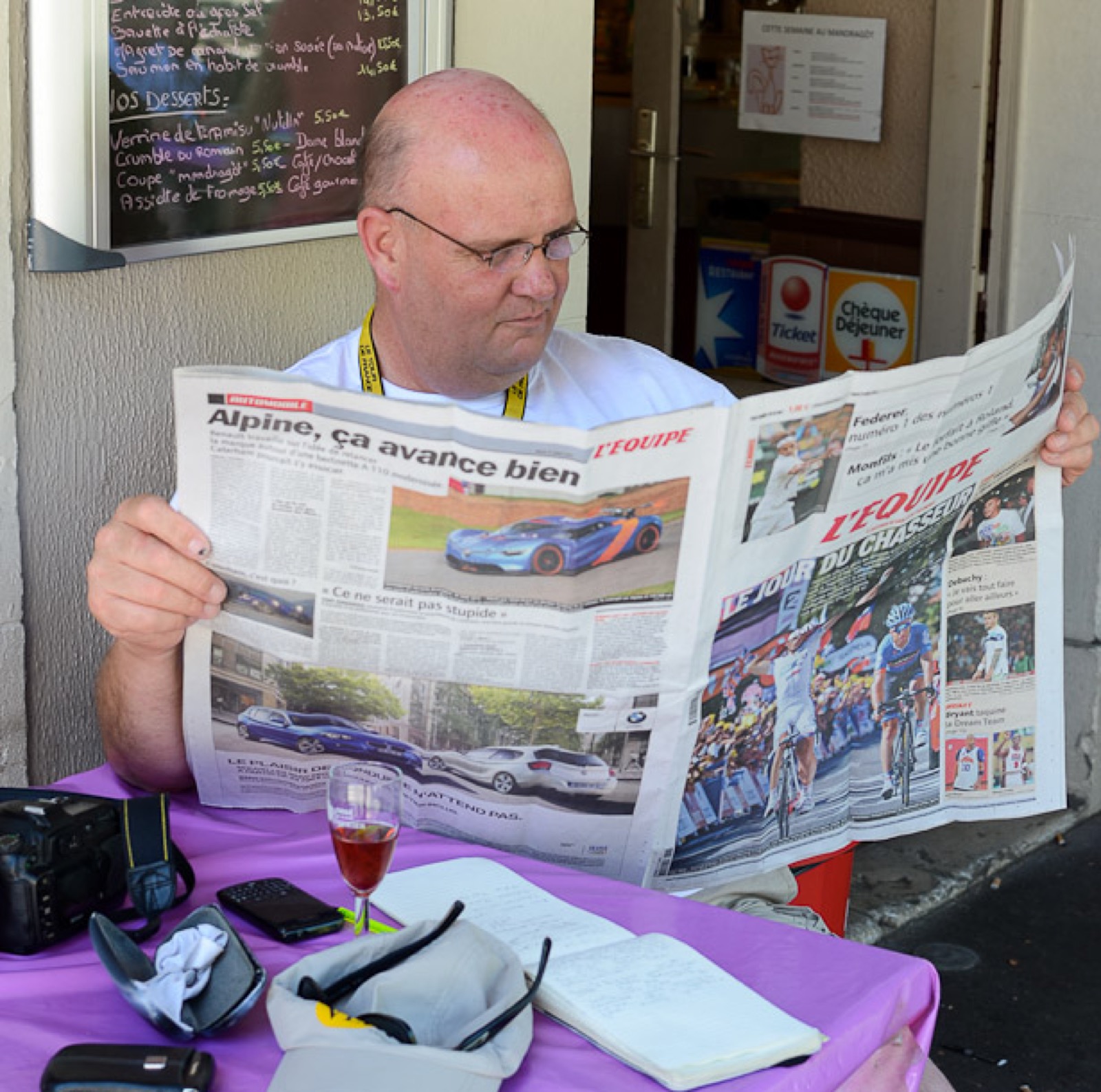Chicken soup for breakfast and a rest day outing to Auschwitz? Welcome to the Peace Race.
Ivy CC stalwart Ken Clark took time to talk to VeloVeritas, and our resident Peace Race expert Ivan, about what it was like to ride the ‘Communist Tour de France.’
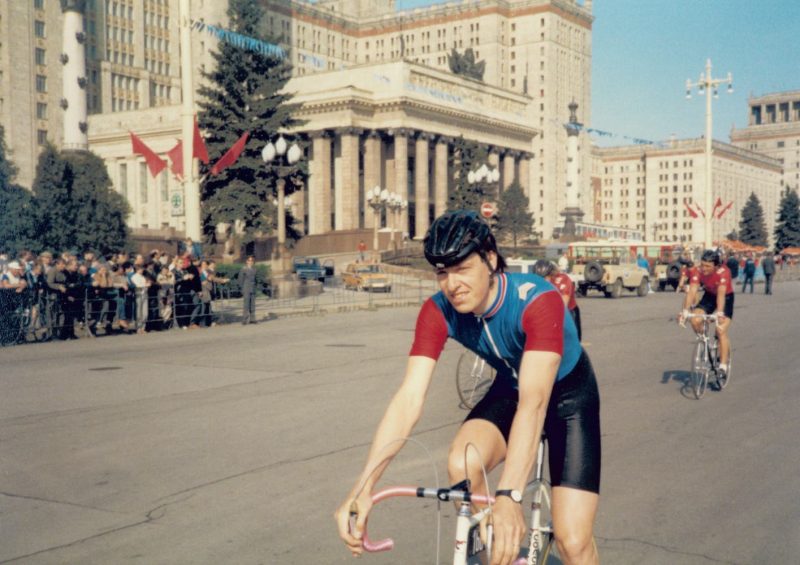
When did you ride it, Ken?
“For GB in 1985, I was 29 and riding domestically for the Ivy – I’ve been a member since I was 16.”
How did you gain selection?
“I rode a good TTT for Scotland at the Commonwealth Games in Brisbane in 1982; we narrowly missed bronze.
“On the strength of that I got a try out with the GB TTT squad.
“I heard later the team manager, Jim Henry had told the strongmen, Elliott and Waugh to make it hard on the hills to see what the new boys were made of.
“I could get up the climbs OK if I was in good condition so I coped with it without too much bother.
“I rode the Giro di Regione in ’83, and: rode strongly in the ’85 Health race. I also put up some strong showings in Denmark.
“I was first reserve for the Olympic TTT in ’84 – I was even measured for the suit – but didn’t go.”
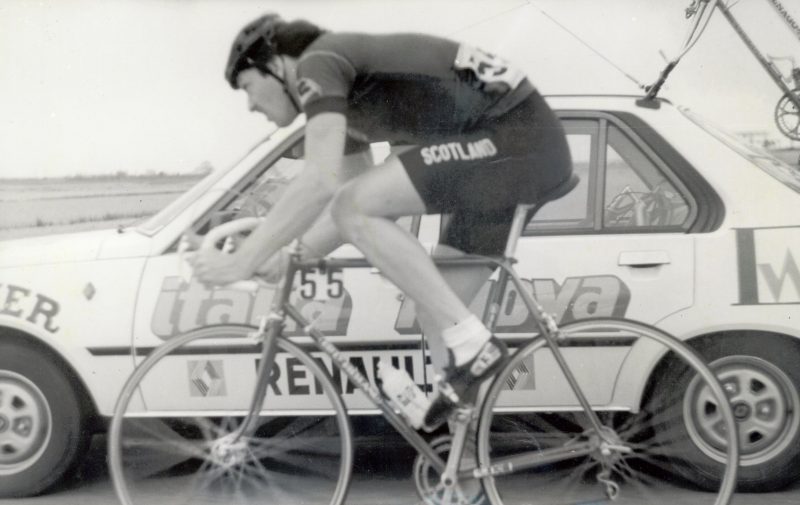
Did you work full time; how did you prepare for it?
“I’ve always worked full time; I’d spoken to John (Clanky) Clark about it and he’d told me that it was a huge race.
“I upped my training and rode in England to get quality racing – events like the Pernod and Cotswolds.”
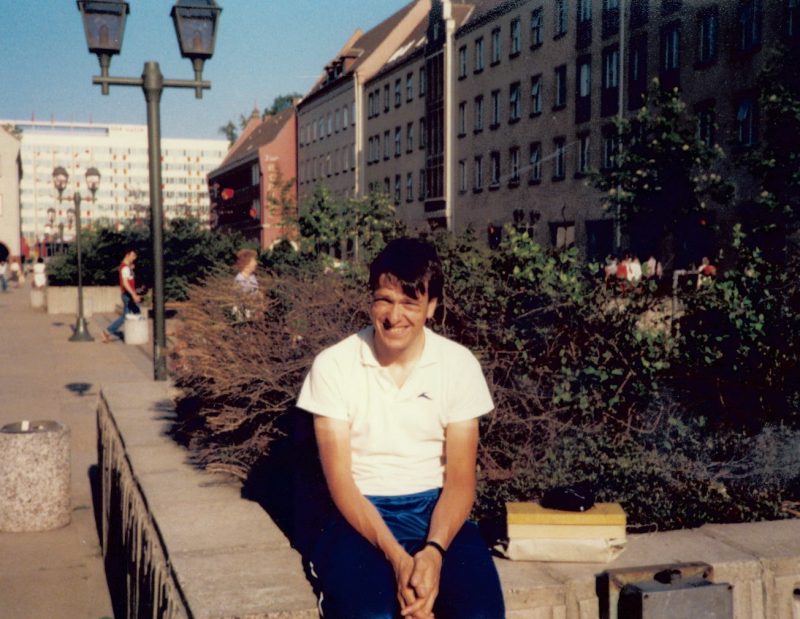
How was the organisation?
“Some aspects were terrible.
“For one of the transfers, each team had a bus – but three or four of them broke down; many of the hotels were shocking, there was one day we got chicken soup for breakfast; the food was terrible, lots of cabbage, and in Moscow the beer was undrinkable.
“But on the other hand, we were given new Barum tubulars at the start, all your race food was supplied, your washing was done for you and after each stage there was a young chaperone to put a blanket round you, give you hot tea and look after your bike.”
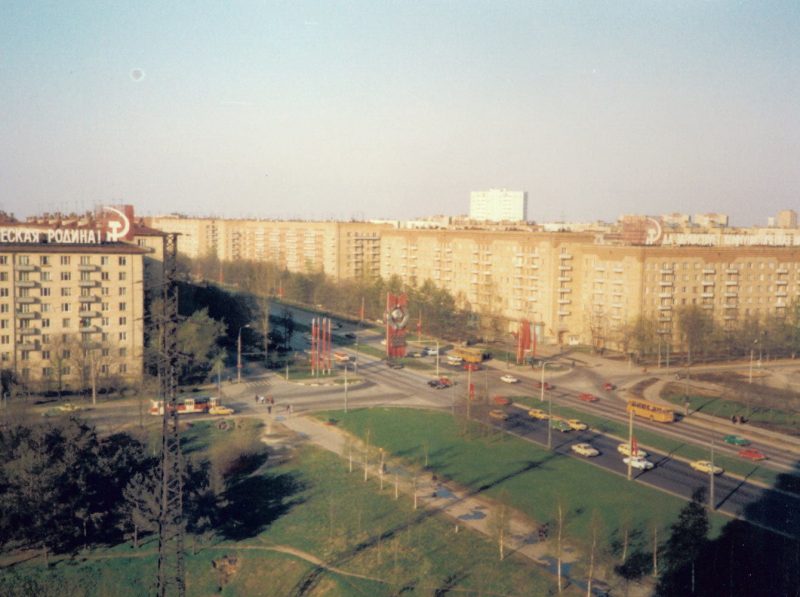
How about the roads?
“Bad!
“There were cobbles, tram lines, railway lines and 20% climbs on cobbles.
“If it was wet you had to make sure that you crossed the tram or railway lines at right angles or you were down.
“That said, I went the whole race with just one puncture.
“But the Swiss guys – who were riding the first of the ‘clincher’ tyres – at the first rail crossing we encountered, all six of them punctured at once!”
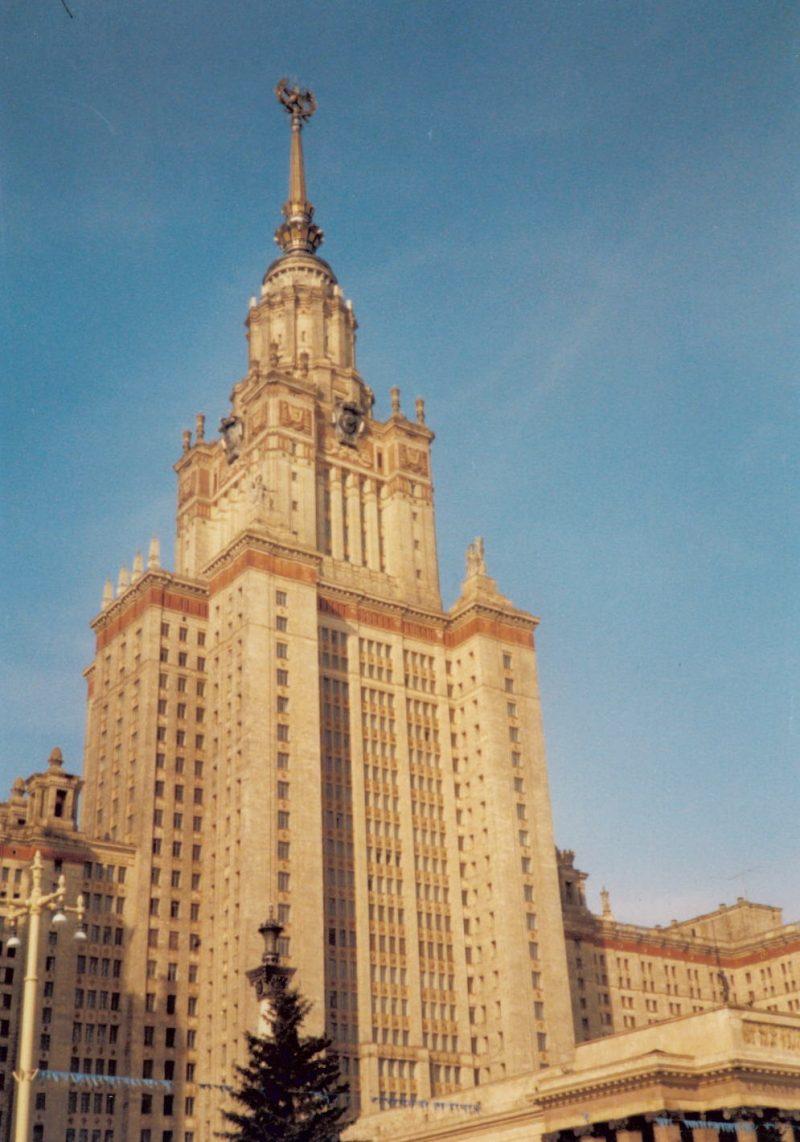
What were the parcours like?
“There was a bit of everything, average stage distance was around 120 miles; there were days when we rode past the coal mines in Poland and finished the stage looking like miners ourselves.
“But there were other days in the south of Poland, in the mountains where it was beautiful – like the Swiss Alps.
“It was actually Prague-Moscow-Prague-Warsaw-Berlin that year; 13 stages, 1712 kilometres with one rest day and an average speed of 43 kph.”
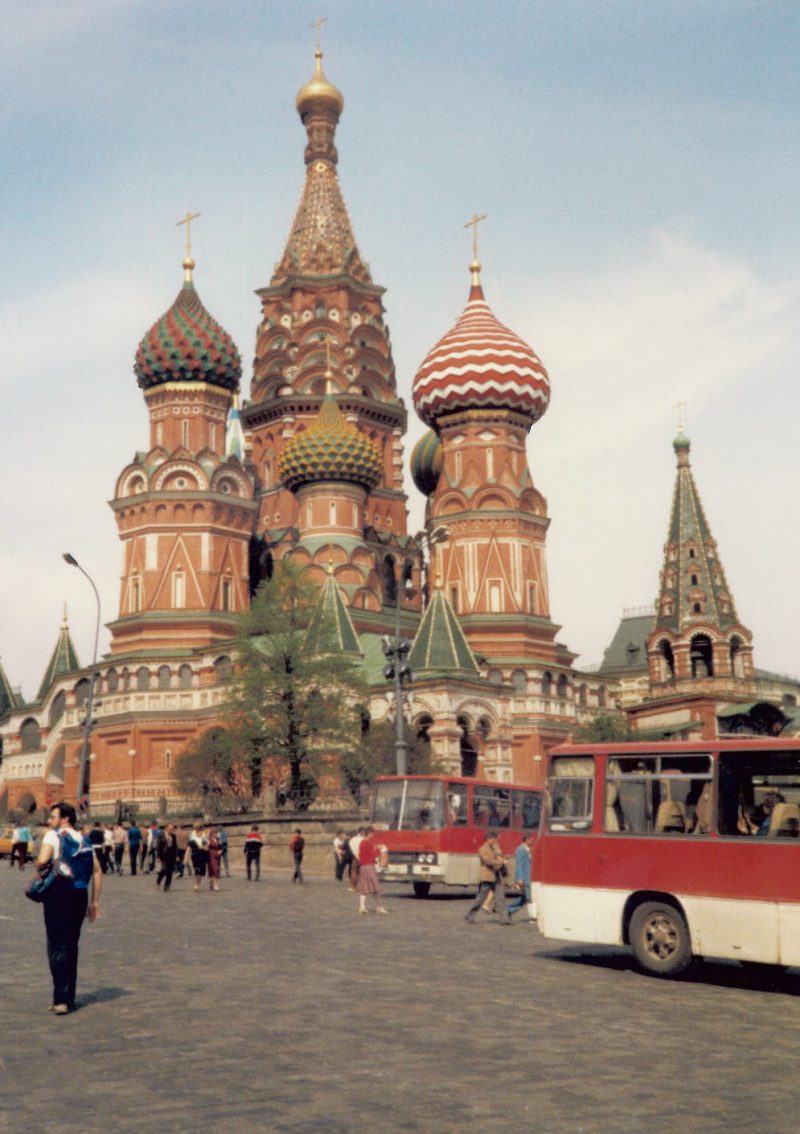
Were you conscious that you were racing in countries with totalitarian governments?
“We were in Prague for three or four days before the prologue and that was when it hit me for the first time.
“People avoided eye contact with you, they just had this down trodden air to them.”
What was a bad day on the Peace Race like?
“Getting dropped early and trying to survive, getting a group around you and getting to the finish.
“I remember one time I was on the wheel of a Mongolian guy, I looked at his bike and it was like something you’d buy at a filling station.
“I remember thinking; ‘it’s time to pass this boy, Ken!’
“On another stage, one of the Mongolian guys had put chocolate bars in his back pockets, they’d melted and it was dribbling down the back of his legs.”
And a good day?
“Finishing comfortably in the bunch – that illusion usually lasted for the first 100 metres!
“I was happy that I was best placed GB rider on the Moscow stage – that was the circuit they used for the 1980 Olympic road race and it was very tough – no respite at all.
“For the individual time trial I said to my manager, Ian Thomson (those Ivy boys get everywhere) that I’d like to give it a go.
“The only trouble was that my lead car was a Trabant and I kept threatening to overtake it on the hills!
“I gave it a good blast and came in around 50th – which Ian reckoned wasn’t a bad ride.”
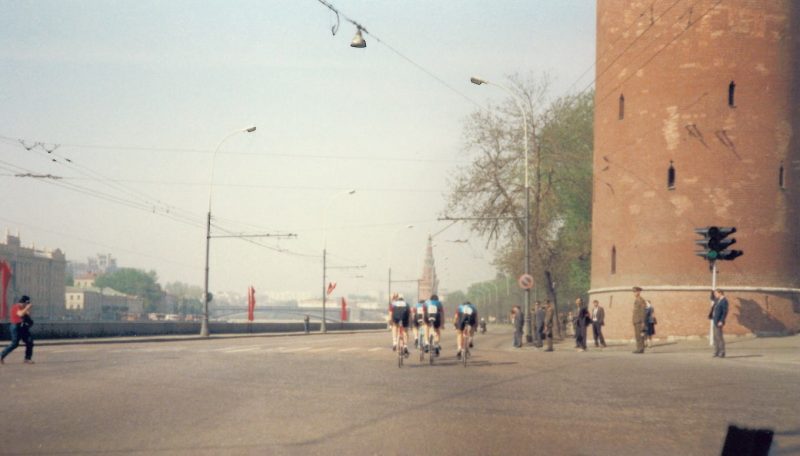
Who won the GC?
“Lech Piasecki of Poland, he lead from start to finish, he won the prologue and three stages, he was very classy.
“He went on to a good pro career; world pro pursuit champion and he held the yellow jersey in the Tour.
“The best non Eastern Bloc rider was Tegstrom of Sweden down in 15th place.
“There were a lot of good guys riding – Brian Holm, Jesper Skibby, Erik Breukink, Andreas Kappes.”
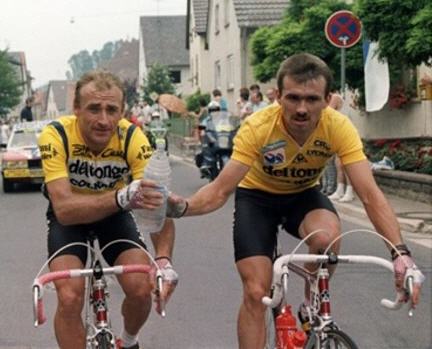
I’ve heard tales of mortal combat between the Eastern Bloc countries.
“On the last stage to Berlin it was a bunch gallop and the East Germans wanted to win.
“Riho Suun the big, classy Russian guy tried to come through on the barriers and the East Germans just rode him right into them, no hesitation.
“Suun limped up to get his finisher’s medal but there wasn’t a word of complaint from him – that was just the way it was!”
Were the Soviet guys the ‘beasts’ of legend?
“They were actually slim and classy but had an air that you didn’t want to approach them or mess with them.
“The Poles were much more approachable and Westernised.
“To the Russians it was ‘life or death,’ you could see that.”
How did you come out of the race, flying or wasted?
“I’d ridden the ‘Star’ race in Denmark before and done well; I had an invite for it again and that came just after the Peace Race.
“The organiser asked me how I was going and I said that I had just ridden the Peace Race and should have good form – I was stuck to the road.
“The worst race of my life!
“But once I recovered I felt stronger than ever.”
Lessons?
“How to ride in a bunch of 140 – the biggest I’d ridden in before was about 80 – and contesting bunch sprints of that size.
“And lines through corners, I’d never raced on completely closed roads, before.”
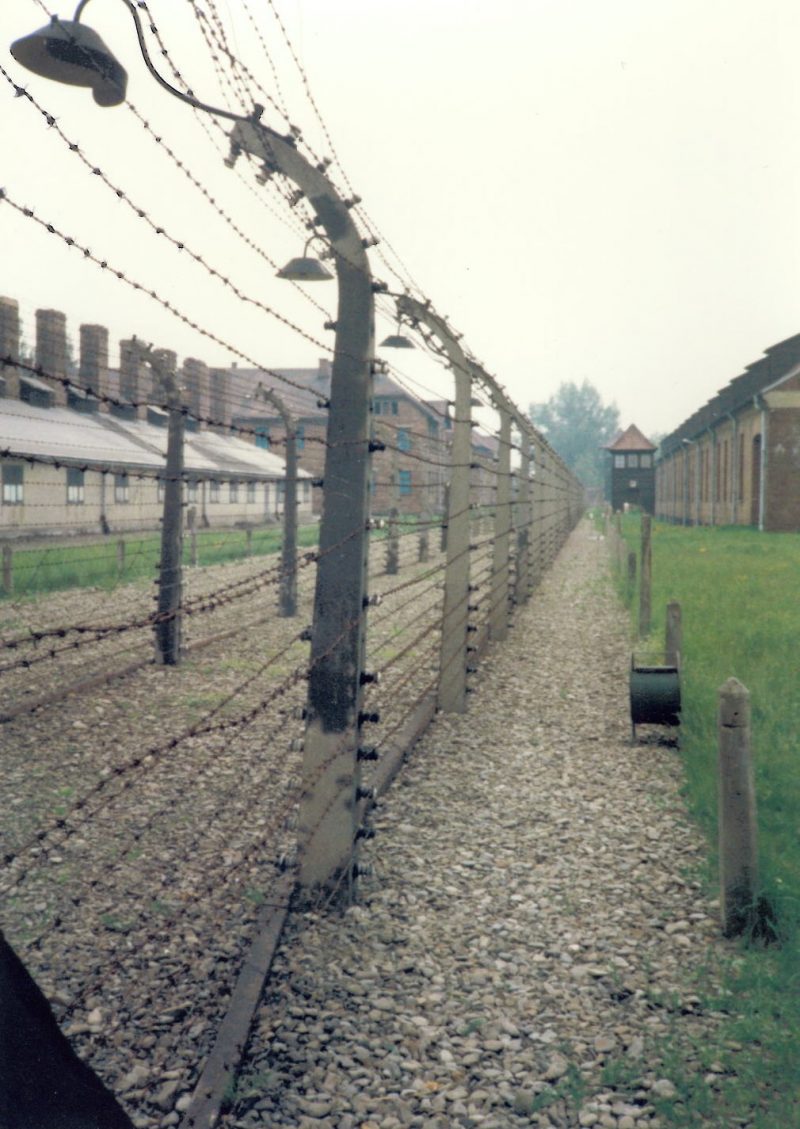
Abiding memories?
“The atmosphere of the crowd, there was one stage where the road was lined with fans for 120 miles; I wasn’t used to that, especially coming from Scottish races.
“Getting chased for autographs, treated like a super star.
“Getting sucked along in the big bunch at high speed.
“Going to Auschwitz on the rest day.
“And what Ian Thomson said before the start; ‘You’ve got to finish this!’ And I said, ‘well . . . aye ?!’
“But it didn’t take me long to see what he meant!”
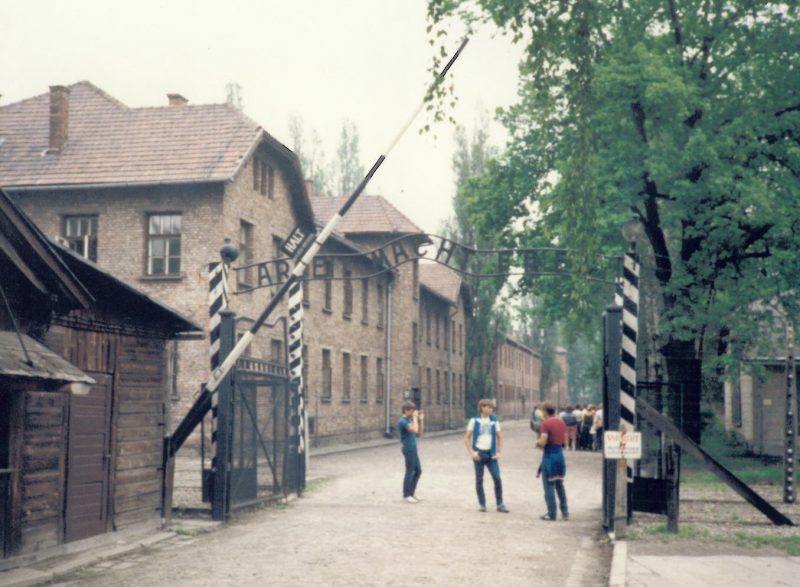
With thanks to Ken – look out for “Ivan talks Peace Race,” coming soon to VeloVeritas.
Have a look at Friedensfahrt-info.de if you’re into stats.
Ken Clark’s Peace Race Result
Our Ken finished 91st, but have a look through the GC for the race – you’ll be amazed at how many names are familiar; guys that went on to have successful Pro careers.
1. Lech Piasecki (Pol) en 39h45’07”
2. Andrzej Mierzejewski (Pol) Ã 1’47”
3. Uwe Ampler (Rda) Ã 1’57”
4. Falk Boden (Rda) Ã 2’07”
5. Jiri Skoda (Tch) Ã 2’37”
6. Piotr Ugrumov (Urs) Ã 2’40”
7. Uwe Raab (Rda) Ã 2’51”
8. Petar Petrow (Bul) Ã 2’55”
9. Milan Jurco (Tch) Ã 3’02”
10. Nenczo Stajkow (Bul) Ã 3’52”
11. Roman Kreuziger (Tch) Ã 4’07”
12. Dan Radtke (Rda) Ã 4’19”
13. Rikho Suun (Urs) Ã 4’45”
14. Jurij Kaszirin (Urs) Ã 4’46”
15. Jonas Tegstrom (Sue) Ã 5’30”
16. Brian-Holm Sorensen (Dan) Ã 6’04”
17. Wasilij Zdanow (Urs) Ã 7’00”
18. Michal Klasa (Tch) Ã 7’07”
19. Torjus Larsen (Nor) Ã 7’31”
20. Vladimir Vavra (Tch) Ã 7’52”
21. Pawel Bartkowiak (Pol) Ã 7’57”
22. Aleksander Zinowjew (Urs) Ã 8’03”
23. Andreas Kappes (Rfa) Ã 8’17”
24. Marek Kulas (Pol) Ã 8’25”
25. Thomas Barth (Rda) Ã 9’07”
26. Marek Szerszynski (Pol) Ã 10’48”
27. Osmani Alvarez (Cub) Ã 11’14”
28. Matthias Lendt (Rda) Ã 11’44”
29. Wiktor Klimow (Urs) Ã 12’10”
30. Marek Lesniewski (Pol) Ã 12’34”
31. Jesper Skibby (Dan) Ã 13’32”
32. Eduardo Alonso (Cub) Ã 13’41”
33. John Talen (Hol) Ã 13’42”
34. Christian Henn (Rfa) Ã 14’43”
35. Jan Simons (Hol) Ã 15’56”
36. John Carlsen (Dan) Ã 16’02”
37. Bernard Richard (Fra) Ã 17’22”
38. Mircea Romascanu (Rou) Ã 19’56”
39. Kjell Nilsson (Sue) Ã 22’37”
40. Torje Alstad (Nor) Ã 22’58”
41. Gabor Weiller (Hon) Ã 24’19”
42. Jacques Van der Poel (Hol) Ã 29’43”
43. Stefan Brykt (Sue) Ã 30’47”
44. Pascal Kolkhuis-Tanke (Hol) Ã 34’07”
45. Georg Weigenand (Rfa) Ã 35’02”
46. Per Pedersen (Dan) Ã 35’35”
47. Anton Novosad (Tch) Ã 36’20”
48. Christo Zajkow (Bul) Ã 36’39”
49. Achim Stadler (Rfa) Ã 37’41”
50. Franco Cavicchi (Ita) Ã 37’53”
51. Roberto Rodriguez (Cub) Ã 39’14”
52. Carlo Bomans (Bel) Ã 39’16”
53. Christian Chaubet (Fra) Ã 39’48”
54. Félix Urbain (Fra) Ã 40’03”
55. Claude Carlin (Fra) Ã 41’03”
56. Kari Myyrylainen (Fin) Ã 41’27”
57. Eduardo Cruz (Cub) Ã 42’57”
58. Frédéric Garnier (Fra) Ã 43’22”
59. Dirk Harzdorf (Rfa) Ã 44’56”
60. Zoltan Halasz (Hon) Ã 46’32”
61. Cristian Neagoe (Rou) Ã 48’45”
62. Patrick Serra (Sue) Ã 50’04”
63. Valentin Constantinescu (Rou) Ã 50’12”
64. Sergio Finazzi (Ita) Ã 52’13”
65. Flavio Vanzella (Ita) Ã 58’17”
66. Arnstein Raunehaug (Nor) Ã 59’07”
67. Gheorghe Lautaru (Rou) Ã 1h02’28”
68. Jacques Philipp (Fra) Ã 1h02’58”
69. Stepahn Schutz (Sui) Ã 1h03’13”
70. Mario Scirea (Ita) Ã 1h04’10”
71. Bojko Angelow (Bul) Ã 1h05’36”
72. Branko Bojanc (You) Ã 1h06’25”
73. Henri Mannaerts (Bel) Ã 1h06’32”
74. Walentin Ziwkow (Bul) Ã 1h11’45”
75. Stephan Van Leeuwe (Bel) Ã 1h13’11”
76. Ricardo Salazar (Cub) Ã 1h21’43”
77. Rajko Cubric (You) Ã 1h26’15”
78. Tapio Niemi (Fin) Ã 1h26’33”
79. Wenelin Chubenow (Bul) Ã 1h30’38”
80. Vagn Scharling Rasmussen (Dan) Ã 1h33’41”
81. Lukacs Szantho (Hon) Ã 1h35’38”
82. Peter Steiger (Sui) Ã 1h36’45”
83. Jorge Salazar (Cub) Ã 1h39’13”
84. Daszamcyn Munchbad (Mon) Ã 1h41’47”
85. Cedendambyn Ganbold (Mon) Ã 1h44’42”
86. Nicolae Aldulea (Rou) Ã 1h46’22”
87. Eric Peters (Bel) Ã 1h47’46”
88. Kevin Morgan (Gbr) Ã 1h49’01”
89. Peter Sajo (Hon) Ã 1h50’37”
90. Jon Bo Asbjorn (Nor) Ã 1h52’32”
91. Kenneth Clarke (Gbr) Ã 1h59’42”
92. Giuseppe Brignoli (Ita) Ã 2h00’17”
93. Gyorgy Zambori (Hon) Ã 2h00’35”
94. Mark Gornall (Gbr) Ã 2h00’51”
95. Patrick Hanninen (Fin) Ã 2h03’37”
96. Costica Paraschiv (Rou) Ã 2h06’40”
97. Geoffrey Davison (Gbr) Ã 2h07’12”
98. Miran Kavas (You) Ã 2h08’47”
99. Radomir Pavlovic (You) Ã 2h09’40”
100. Martin Eadon (Gbr) Ã 2h12’32”
101. Juraj Robic (You) Ã 2h13’11”
102. Hans Haltiner (Sui) Ã 2h20’59”
103. Nicola Vanin (Ita) Ã 2h22’29”
104. Vlado Marn (You) Ã 2h32’51”
105. Batsuchijn Chajancharvaal (Mon) Ã 2h33’30”
106. Jurgen Eckmann (Rfa) Ã 2h42’41”
